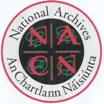Ireland Valuation Office Books
Search over one million manuscript records from the Valuation Office in Ireland to find if your ancestor owned or rented property between 1824 and 1856.
See description
Search over one million manuscript records from the Valuation Office in Ireland to find if your ancestor owned or rented property between 1824 and 1856.
Learn about these records
In this collection you can find several different manuscript records from the Valuation Office in Ireland:
-
Field books
-
House books
-
Quarto books
-
Rent books
-
Survey books
-
Tenure books
Both transcripts and images of the original records are provided. Depending on the type of record you are looking at, you may be able to discover the following information in the transcript:
-
Name
-
Year
-
Valuation date
-
Revision date
-
Townland
-
Parish
-
Barony
-
County
-
Lessor/other name
-
Book type
-
Reference code
-
NAI microfilm reference
-
Archive
The images of the original records have also been provided and can offer additional information, particularly about the land being assessed. Some book types, such as tenure books, include notations about the property as well as notes on the cost of rent and any additional observations. House books also often include descriptions of a property and its various components, such as notations of office barn and piggery. Quarto books include observations about the tenement, sometimes including quite a wealth of details: "House unfinished, good yard, but gateway not sufficient, built on ground rent, ceiling above…"
The original records are handwritten and, as such, there may be some errors in the transcriptions due to difficulty in deciphering the original text. Checking the images will help to ensure you have the most accurate information.
Records have been provided in partnership with the National Archives of Ireland.
This collection houses several types of manuscript records from the Valuation Office in Ireland: field books, house books, quarto books, rent books, survey books, and tenure books. All of these books helped to inform the publication of Griffith’s Valuation, which was a comprehensive assessment of the rental value of Irish lands and property from the mid-1820s to the mid-1850s. The assessment of land and buildings in Ireland was intended to aid in the re-evaluating of local taxes, which were at that time unevenly applied.
These records were compiled in three waves, each with its own distinct parameters for assessment, prior to the publication of Griffith’s Valuation. These three methods for assessment produced different records. During the first valuation, house books would list the names of occupiers while field books recorded details solely related to soil quality. The nature of these two books changed slightly by the third valuation where both were including information on occupiers.
While the house and field books were by far the most prolific, other manuscript records were also compiled. Tenure books detailed the landlord and lease information, including the lessor’s name. Rent books recorded rents paid and quarto books covered towns.
As we have Griffith’s Valuation online here at Findmypast, you may be wondering what worth there is in these pre-publication records. It’s important to remember that the Griffith’s Valuation shows us Ireland in the immediate aftermath of the Great Famine—a catastrophic event with enormous impact on Ireland, its people, and its trajectory. As such, huge changes often occurred between the pre-publication manuscripts and the published valuations, which offer incredible insight into this period of time in Ireland.
As you search through these records, keep in mind that not all records have survived fro all the parishes. If you are interested in a particular area, be sure to check all the book types for that area as the classification of book types was, at times, inconsistent and you may be able to find useful information in unlikely places.
William Butler Yeats’ grandfather, William Pollexfen, can be found listed in a house book from December 1855. In the townland of Rathedmond in County Sligo, he’s recorded alongside William Middleton and the property in question is listed as coal yard and office. From the image we further see that the immediate lessor is listed as Board of Customs.
Two sons of Daniel O’Connell, known as The Emancipator of the Catholic Irish, can be found in these records. His son Daniel O’Connell, the creator of O’Connell’s Ale and former Member of Parliament (MP), is listed in the townland of Caheriveen. His brother Maurice, also a former MP, is listed on the same page, further down.
Search tips
- Use the previous and next buttons in the image viewer to see multiple images in this collection.
-
In looking at these records, please keep in mind that not all records survived for all parishes.
-
Additionally, the categories for book type are somewhat hazy so be sure to check all results for the area in which you are interested.
- If you’ve found your ancestor in these valuation manuscript records, try cross-referencing them with Griffith’s Valuation to see what changes occurred to their situation between the time of the original record and the publication of Griffith’s Valuation. Follow the link provided in the Useful links and resources section for Griffith’s Valuation 1847-1864.
